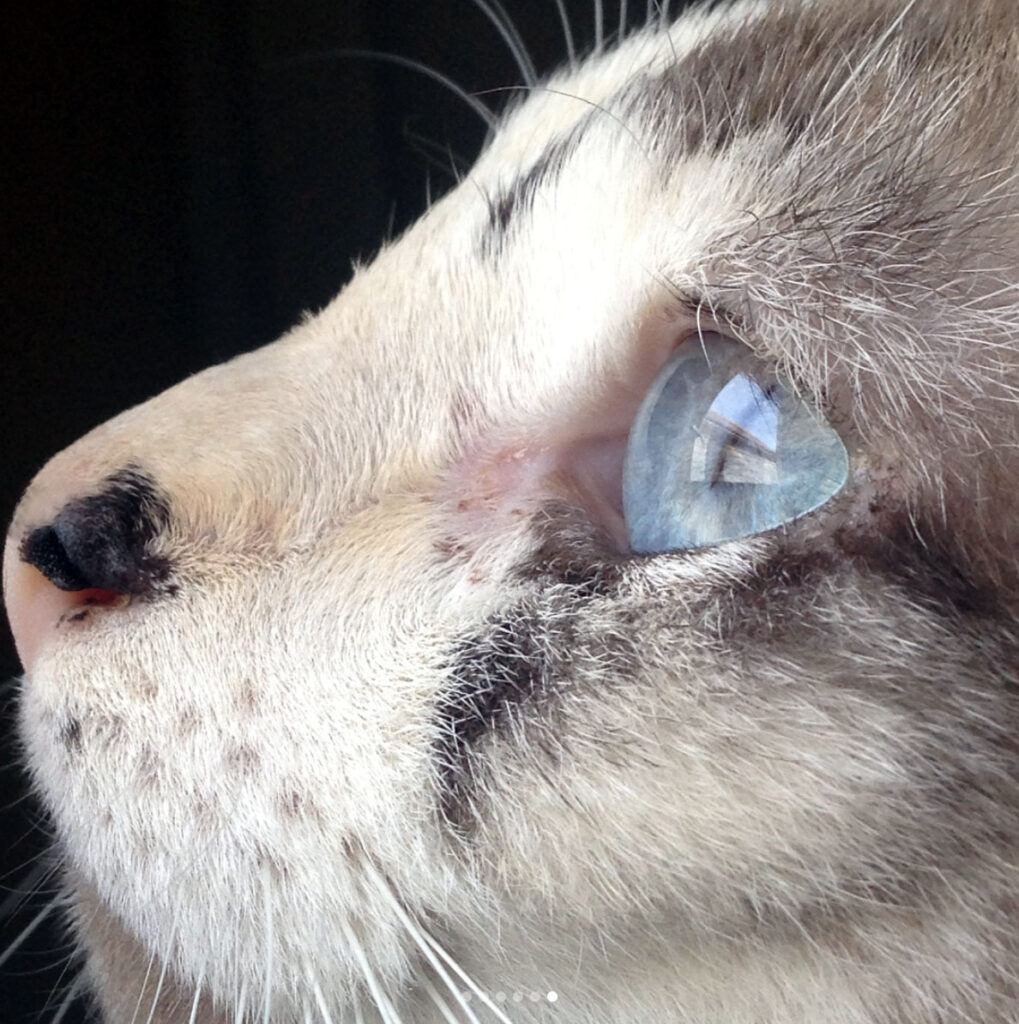This post may contain affiliate links. This means I may receive a small commission if products are purchased through them. All opinions are honest and remain my own.
It’s estimated that about 10% of the population have pet allergies, with cats being the most common type. I myself (a generally sneezy person) suffer from seasonal allergies and have always wondered if I’m secretly a little allergic to cats as well. If I am, it must not be very severe and I have never let it stop me from being a cat mom. If you suffer from feline allergies and have found yourself thinking, “I have cat allergies – but I want a cat!” then read on.

There’s a reason why millions of households across the country contain at least one cat. They are endlessly entertaining, make wonderful companions, and are relatively easy to care for. But what about people with cat allergies? Is it possible for them to coexist with a feline, or are they doomed to miss out on the joys of cat parenthood?
If you suffer from cat allergies but want a cat, there is hope. You don’t necessarily have to forego pet ownership. There are many solutions available to help alleviate and control the unpleasant symptoms of feline allergens.
What causes cat allergies?
Before looking into management solutions, it’s important to first understand what cat allergies are exactly and what causes them. Most people think it’s the cat’s hair that is the problem, but typically the real culprit is a protein called FEL d 1, which is found in cat’s saliva, tears, urine, and dander (dried flakes of skin.)

This means that when a cat grooms himself or uses the litter box, it releases the FEL d 1 protein into the air or onto his fur. When a person with cat allergies comes into contact with that protein-laden hair or breathes in the air, that is what causes an allergic reaction in most cases.
Symptoms of cat allergies
If you have cat allergies, you are probably well aware of the symptoms. They can range in severity and may include:
- sneezing
- watery eyes
- runny nose
- itchy/red eyes
- nasal drip/sore throat
- coughing or wheezing
- painful pressure and swelling around face
- rash or hives
Chronic allergies to the FEL d 1 protein in cats has even been known to lead to asthma, according to the AAFA (Asthma and Allergy Foundation of America.) And contact with a cat can trigger an asthma attack in three out of ten people who suffer from the disease.
Allergy testing and immunotherapy
If there is any doubt in your mind that your allergy symptoms are indeed being caused by cats, get tested by an allergist to be certain. I should really follow my own advice here, but I’m stubborn and tend to avoid doctors if I can get away with it. If your symptoms are more severe than mine though, seeing an allergist can help.

Right now the only treatment that allergists can really offer is immunotherapy, or allergy shots. The idea is to build up your body’s tolerance to the FEL d 1 protein by injecting it into your body in small, controlled doses. Eventually your body will stop recognizing it as a threat and allergy symptoms will diminish. It’s not ideal. It requires frequent trips to the doctor and a LOT of shots. Not something that everyone has the time and patience for. Allergy researchers are currently working on a more effective treatment but for now this is as good as it gets.
That being said, there are many other ways to control cat allergies, once you understand what causes them.
Ways to keep cat allergies under control
The most effective strategy in controlling cat allergies is to take a multi-pronged approach. Using not just one, but many of the following techniques will give you the greatest chance of success.
#1 Keep your house as clean and hair-free as possible
Although its not the hair itself that most people are allergic to, the FEL d 1 protein gets onto the hairs and therefore containing them is crucial for cat allergy management. Have someone brush the cat on a regular basis to minimize excessive shedding. For tips on the best ways to clean cat hair see my article How to Get Rid of Cat Hair Everywhere.
#2 HEPA filter vacuums
When you vacuum, just as many allergens get released into the air as get removed, so for a person with allergies it’s important to use a vacuum cleaner with a HEPA filter. HEPA (High Efficiency Particulate Air) filters are able to trap a large number of tiny micros, minimizing the amount of allergens floating around your house.
#3 Use air purifiers
Air purifiers (like this one) also use a HEPA filtration system and are another great way to keep the air in your home clean and free of pesky allergens. And the best part? It’s labor-free! Keeping at least one air purifier in your home is one of the most important steps you can take in controlling cat allergies.
#4 Allergen sprays
Another tool to keep in your arsenal is an allergen spray. An allergen spray is a formula that you simply spray all around your house to destroy all kinds of allergens including dust mites, pet dander, pollen, mold, and mildew. The most recommended brand is Allersearch ADMS. It’s non-toxic and non-staining, so it’s safe to spray on all surfaces, regardless of color. Mist Allersearch ADMS over furniture, drapes, carpet, pet beds, and anywhere else that needs it.

#5 Cat dander removers
They also make special formulas that you apply directly to your cat’s fur to help reduce dander. Allerpet Cat Dander Remover works by removing the dander before it becomes airborne. Simply apply to a washcloth and lightly wipe across your cat’s fur until damp.

#6 Don’t let the cat in your bedroom
Though this might be heartbreaking, it’s for the best. When cats sleep on your bed, their dander settles into the sheets and bedding, making it hard for you to get a good night’s rest. Making your bedroom a cat-free zone will go a long way in alleviating allergy symptoms and help you feel better overall.
#7 Hypoallergenic cat breeds
While there are no breeds of cats that are 100% allergen-free, it’s believed that certain breeds produce less than others and are therefore better for allergy sufferers. Some breeds produce less of the FEL d 1 protein, and others simply shed very little or don’t need to maintain their coat as much as others (less saliva in the fur.) These are the most hypoallergenic cat breeds:
- Siberian
- Bengal
- Balinese
- Russian Blue
- Sphynx
- Devon Rex
- Cornish Rex
#8 Keep the litter boxes immaculate
Since FEL d 1 is found in kitty urine, keeping the litter boxes extra clean will help eliminate more airborne allergens. Try getting someone else to take care of that duty for you if it causes your allergies to flare up, or wear a dust mask.
#9 Medication
If all else fails, you could also try controlling cat allergies with medications like antihistamines, corticosteroid nasal sprays, or over the counter decongestant sprays. I would recommend trying the above methods first, however. Eliminating as much FEL d 1 as possible is the most effective way to deal with cat allergies.
So you see, if the proper precautions are taken, it is entirely possible to have a cat even if you have allergies!

Leave a Reply